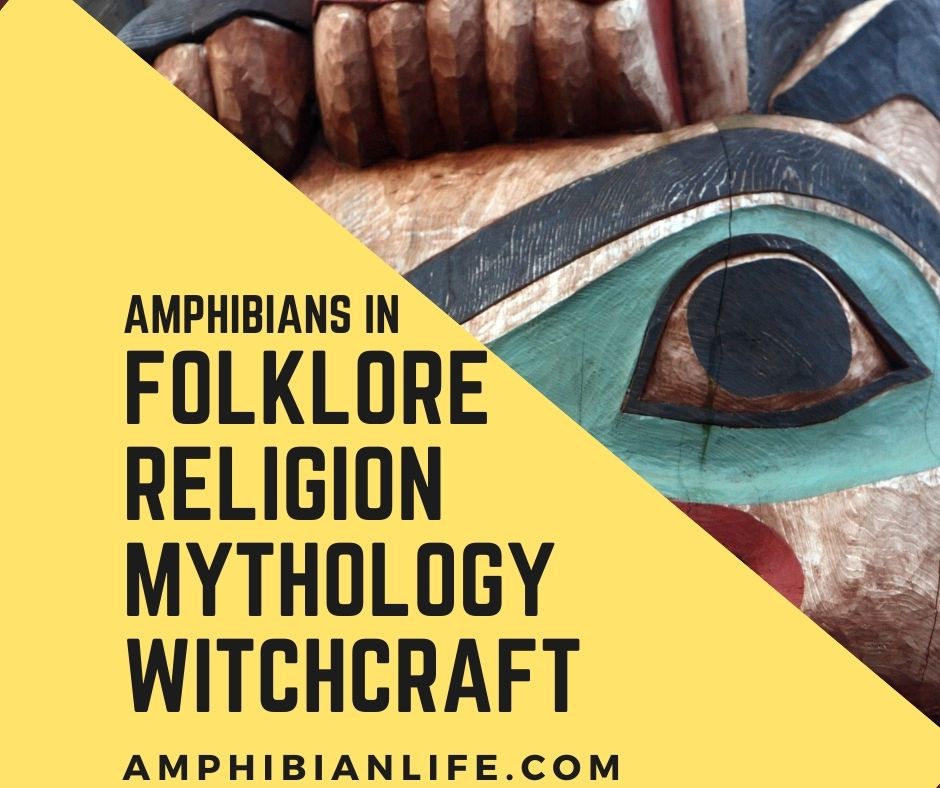
Amphibian Folklore
For thousands of years, people usually associate amphibians with myths and magic.
Unfortunately, much of the folklore surrounding amphibians is negative, portraying them as devious, ill-hearted monsters.
However, some cultures view amphibians in a positive light, relating them to good fortune, protection, fertility, and more.
It is interesting to note the origin of such thoughts, and amazing to know they survived for so long.
The following passages summarize a few tales of amphibian folklore, including the origin of the belief where available.
In ancient times, people collects clay from from sites that may have abundant amphibians.
The people of Mesopotamia, for example, collected clay along the Tigris and Euphrates Rivers, where they encountered frogs often.
Thus, These encounters have inceptions in the ancient words for frogs.
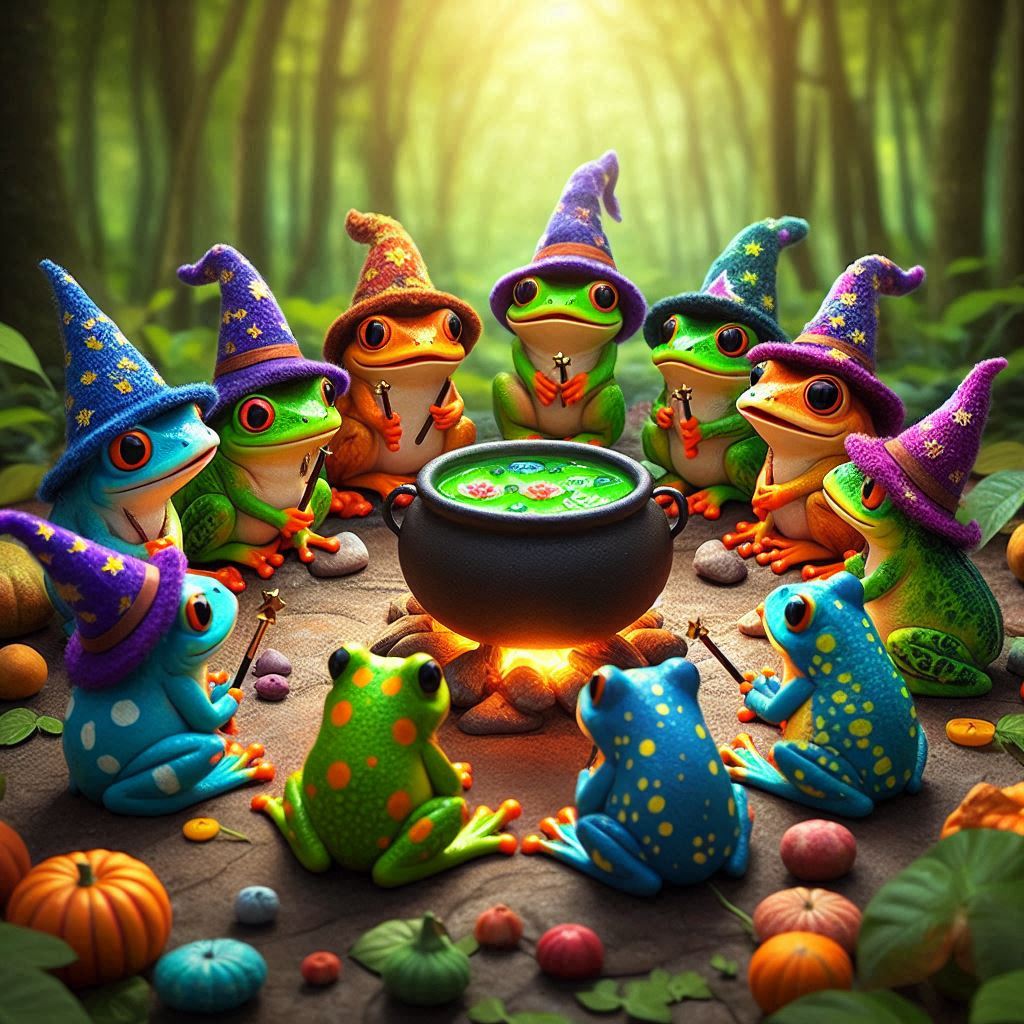
What did Frogs symbolize in ancient Egypt?
Egyptians adopted the word “krr” or “krwrw”, which resembles the sound a frog makes when spoken.
Babylonians used the word “krůru”, which also resembles the sound of a frog.
Ancient civilizations were clearly aware of the amphibians, and some adapted them into their beliefs.
Egyptian history denotes that frogs are born from mud and water; a belief that seems to be a reflection of the semi-aquatic amphibian lifestyle.
This belief materialized as a result of Nile River floods during the rainy season when frogs would seemingly appear out of nowhere and begin their mating rituals.
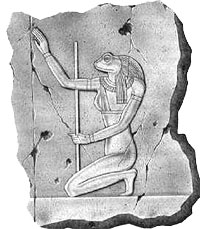
Frogs also have depictions on jewelry and other ornaments in ancient Egypt and other civilizations.
Frog-laden knives placed atop the bellies of pregnant women and newborn babies were believed to bring protection to the youngsters.
Frogs in general were so important to the early Egyptians that they were often embalmed upon death.
Frogs in Greek Mythology
Greeks and Romans adopted much of the Egyptians’ traditions, including the belief that frogs originates from mud and water.
It was also around this time that the “Frog Rain” phenomena came into existence.
During ancient times, before global amphibian declines, frogs often reproduced in hordes during their mating season.
Thousands of tiny frogs and toads covered walkways, entered homes, invaded public areas, and were generally regarded as pests.
This was dubbed as “Frog Rain” because such occurrences took place after the first heavy rains of the season.
Frogs also associate themselves with weather predictions because they begin croaking just before rains.
Preceding this observation, They often impale frogs until they scream, and nature of their screams was asscoicated with weather.
Frogs in Witchcraft, Dark magic, Totem, Spirit & Omens
Witchcraft and Frogs
Frogs and toads association with dark magic and other evil matters.
- To control the weather Witches use concocting brews of snakes, toads, and frogs often referred to as “Toad Soup”.
- Witches mangling toad bodies in satanic rituals or concocting malicious spells and potions from body parts of toads.
- According to Basque tradition, you can identify witches by the presence of a marking in the shape of a toad’s foot,
- In the great Pyrenees, people believe that witches have a toad image in the left eye.
- Some tales also depict witches extracting toad skin secretions or toad saliva for use in flying potions, and invisible spells.
- In Christianity, they consider frogs as evil demonized creatures, especially in the book of Revelations.
- You can find the Frog’s associations with gossip, boastful sinners, and hypocrites.
Apostles frequently donned their lessons with deliberate questions such as, “What do frogs and sinners have in common? They both live in dirt!”.
Henry David Thoreau, Walden
Frogs In Totems and Dark magic
- Ancient people consider Swamp frogs unholy and exemplify the power of baptismal water to expunge evil and purify sinners.
- In middle-age Europe, People referred Devil displaying three toads on his coat-of-arms.
- Some believed that toads are in possession of witch spirits and conspire to poison people.
- Some tales expound procedures for removing a toad from one’s home, to prevent witches’ wrath.
- People believed that animals were the embodiment of sinners, and when humans sinned, they were like animals.
- They believed the purpose of civilization was to overcome animalistic characteristics, thus becoming close to God.

The men are trying to destroy the “wicked” frogs as they come out of the water to torment and infect mankind. In the background, you can see small children trying to flee the frogs.
Sacred Pageant of the Ages Vol 02
Contradictory to the common beliefs, some Christian documentation portrays frogs and toads as semi-mischievous house guardians.
Interestingly, the Christian visionary, Jakob Lorber (1800-1864) claimed to have received the following message from the Lord, alluding to the role of frogs as teachers of life:
“The frog croaks almost all day in joy of the life stirring in his puddle and praises me with his croaking joy about the gift of life”.
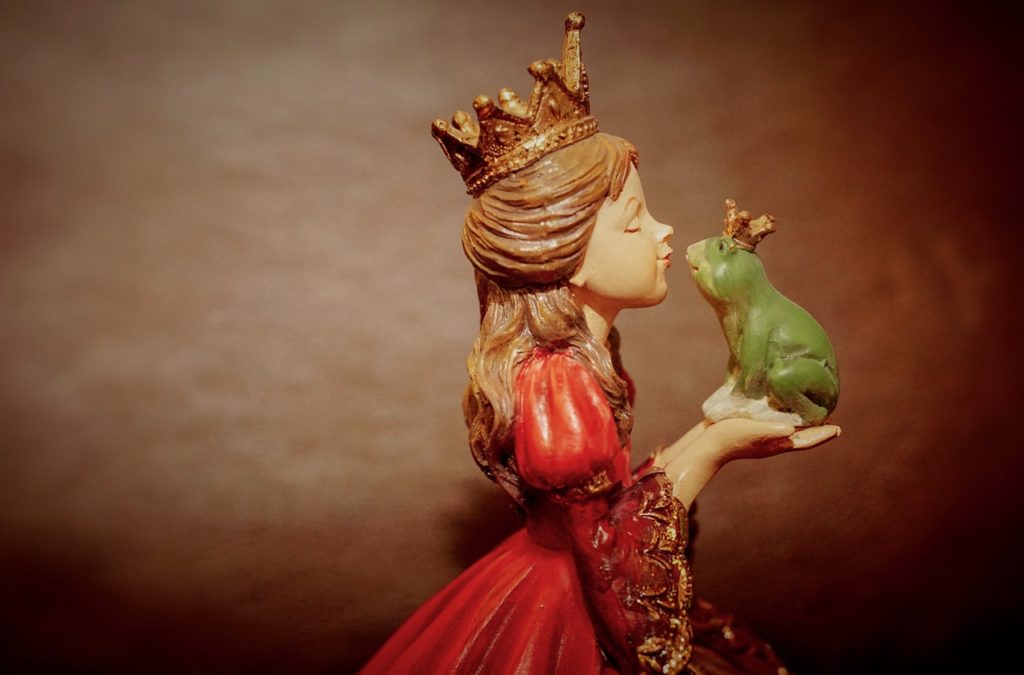
Frogs and Toads in Ancient Science
During the middle ages, societies showed more interest in science, namely the study of animals. Although these studies were embodied by myth and folklore, they were the stepping stones to modern biological sciences.
The book Physiologus, from the middle ages, was perhaps the most important literary work pertaining to the science of animals during that time.
In this book, frogs have two categories: land frogs and water frogs.
- Land frogs symbolize stamina and steadfastness, as they must endure the heat of the sun.
- Water frogs, on the other hand, symbolized cowardly behavior, and flight from danger.
Toads and Frogs in Alchemist Beliefs
In Alchemy, toads have associations with flight, and symbolized the watery-earth portion of the Ur matter (primeval matter).
This tale was metaphorically described in such inscriptions as, “Set a toad upon a woman’s breast, so that it may suck, and the woman die, the toad will grow very large from the milk”.
What is a Herpetofauna?
It comprises of two words Herpetology and Fauna; Refers to all reptiles (like snakes) and amphibians including frogs, toads, salamanders of a particular habitat, region, or geological period.
Herpetology refers from Greek word herpetón, meaning “reptile” or “creeping animal”.
Fauna refers to all the animals of a particular region, habitat, or geological period.
Herpetofauna in Traditional Folk Medicine
Amphibians were regarded in the ancient times, and into the middle ages, as possessing medicinal properties.
Frog potions: They use them as aphrodisiacs, impotence and infertility prevention, contraceptives, and more.
Frog liver: They believed it consists of two halves, one of which is the antidote to all any poison in the world,
Toad lungs: They believed to be the means of the “perfect murder of a husband”.
Cleanse mind: The believed frogs can remove any thoughts of adultery from ones wife mind.
Undoubtedly, much-experienced illness or death after ingesting or applying frog-made brew that has toxic secretions.
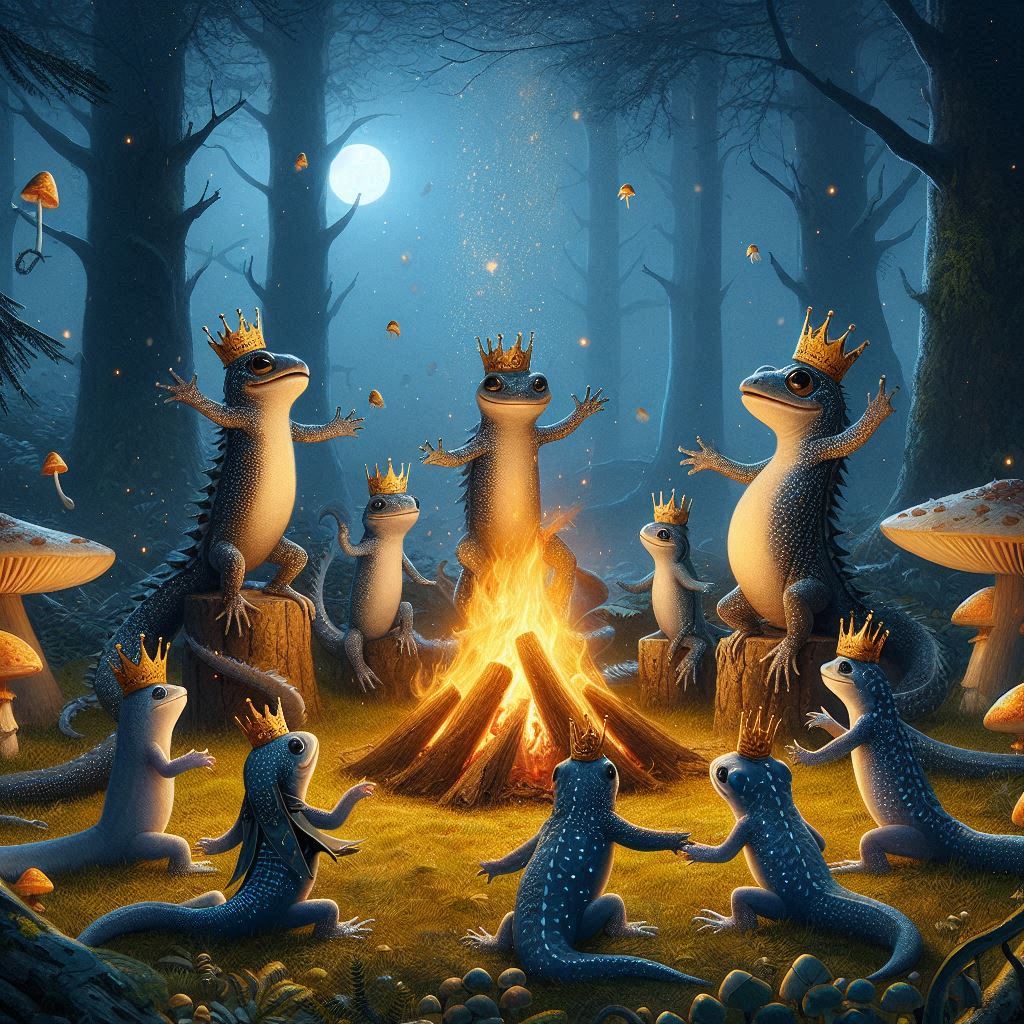
Newts and Salamanders Folklore
Newt and salamanders association with evil and mischief.
Salamanders are linked to fire as far back as the times of Aristotle (384-322 BCE.); the word salamander is of Greek origin, and translates roughly to “Fire-Lizard”.
It was believed that salamanders were immune to fire, and could extinguish the fire with skin secretions.
In 1607, Edward Topsel published the book The History of Four-Footed Beasts and Serpents, which, along with illustrations of newts and salamanders resembling serpents and dragons,
hypothesizes about the ability of salamanders to extinguish the fire, receive nourishment from fire, and traverse through fire unscathed.
This leads to the origin of the of the vernacular name “Fire Salamander”, given to the species Salamandra salamandra.
The Belief that Salamanders were Born in Fire.
Because salamanders inhabit cool, damp places, they have settled down in collected firewood.
When they kindle the wood, the salamanders would attempt to flee to safety.
Such a site could have prompted such notions as the salamander’s affinity for, or immunity to fire.
Not relating the two, the quenching of fire may have been linked and blamed on the salamander.
Salamanders in Medicinal purposes.
In ancient times people often burn salamanders to ashes, which they collect and use in medicinal formulas and concoctions.
The Belief that Salamanders Saliva make Hair Fall Out.
Even today, the skin and body parts of salamanders are integral part of some traditional medicine.
In Some parts of Asia people sell torched newts as aphrodisiacs, and advertise them for curing skin diseases.
Salamander’s Negative Association with cows.
In past people believed that Salamanders suckle cows, resulting in the cow’s inability to produce milk from that point forward.
The myth came into existence from sightings of dead newts or salamanders that released their milky fluid when squashed by a cow.
For Further Reading
I hope that you enjoyed reading this nostalgic article, and have enough information about amphibian folklore.
here are some more article related related to amphibians that may potential be in your interest.
Do you want to Know if Newt or Salamander bites hurts?
Why not go ahead and learn about What is Albinism? ( What are Albino Amphibians and Animals)
